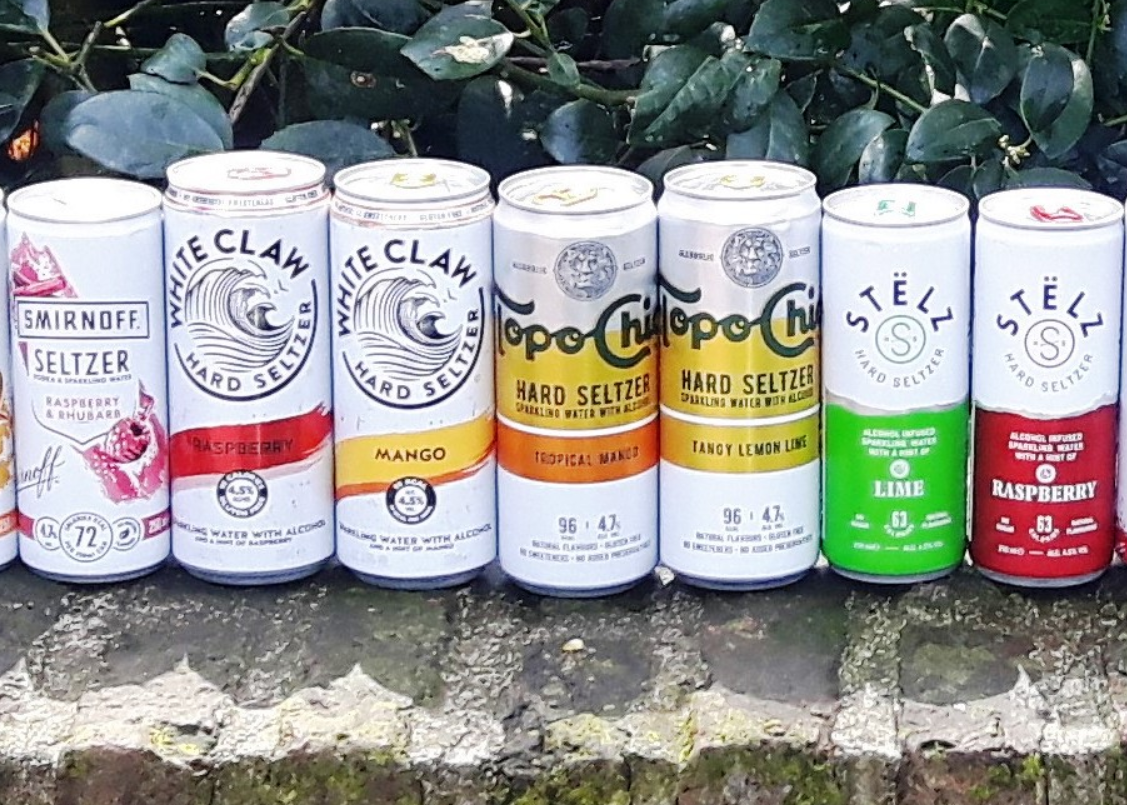Understanding Standard Drinks: Why a 12-Ounce Hard Seltzer and 1.5 Ounces of Liquor Are Equivalent
TL;DR: Despite their very different serving sizes, a 12-ounce hard seltzer and a 1.5-ounce shot of liquor contain exactly the same amount of pure alcohol: 14 grams or 0.6 fluid ounces. This equality comes from simple math. Hard seltzers usually have 5% alcohol by volume (ABV), while distilled spirits have 40% ABV (80-proof). The higher concentration in liquor means you need much less volume to reach the same alcohol content as the larger but weaker hard seltzer. Understanding these “standard drink” equivalents is important for tracking alcohol intake, drinking responsibly, and making informed decisions about consumption across different beverage types.
What Is a Standard Drink?
A standard drink is a way to help people keep track of how much alcohol they consume. It ensures that they understand how different drinks compare. In the United States, a standard drink has 14 grams (0.6 fluid ounces) of pure alcohol, no matter what type of beverage it is. This standard makes it easier to drink responsibly by giving a clear method to measure alcohol intake.
Standard Drink Equivalents Across Beverage Types
Although different alcoholic beverages vary in volume and alcohol content, they can still have the same amount of pure alcohol. Here’s how common drinks compare:
- Beer: A 12-ounce (355 ml) can of beer with 5% alcohol by volume (ABV) is one standard drink.
- Wine: A 5-ounce (148 ml) glass of wine with 12% ABV equals one standard drink.
- Hard Seltzer: A 12-ounce (355 ml) can of hard seltzer with 5% ABV is one standard drink, similar to beer.
- Distilled Spirits (Liquor): A 1.5-ounce (44 ml) shot of 80-proof liquor (40% ABV) is one standard drink.
These measurements help illustrate why a 12-ounce hard seltzer and a 1.5-ounce shot of liquor are considered equal in terms of alcohol content.
Why Are These Equivalents Important?
Understanding standard drink sizes is important for moderating alcohol intake and making informed choices about consumption. Misjudging the alcohol content in different drinks can result in overconsumption, poor judgment, and higher health risks.
For example:
- A large glass of wine (8 ounces at 12% ABV) contains more than one standard drink.
- Craft beers with higher alcohol content (e.g., 8% ABV) may contain 1.5–2 standard drinks per 12-ounce serving.
- Mixed drinks and cocktails often contain multiple standard drinks depending on the ingredients used.
Common Misconceptions About Alcohol Equivalents
Many people assume that certain alcoholic beverages are inherently “weaker” than others, but this is a misconception. Here are a few key clarifications:
- “Light” beer doesn’t always mean lower alcohol—some light beers have nearly the same ABV as regular beer.
- A cocktail with multiple ingredients may have more than one standard drink—for example, a Long Island Iced Tea contains as much alcohol as four or more standard drinks.
- “One drink” doesn’t always mean one standard drink—restaurant pours and home servings can vary significantly.
How to Track Alcohol Intake More Accurately
To help ensure responsible drinking, consider the following:
- Use a standard drink calculator to estimate alcohol intake across different beverages.
- Check alcohol labels, especially for craft beers and specialty drinks.
- Measure liquor servings at home rather than free-pouring, which often leads to overconsumption.
The Health and Legal Implications of Standard Drinks
Consuming alcohol beyond recommended limits can have serious health and legal consequences. The Centers for Disease Control and Prevention (CDC) defines moderate drinking as:
- One drink per day for women
- Two drinks per day for men
Exceeding these guidelines increases the risk of liver disease, high blood pressure, and impaired cognitive function. Additionally, knowing standard drink sizes is essential for staying within legal blood alcohol limits when driving.
Key Takeaways – Understanding Standard Drinks
- “Standard drink” is based on alcohol content, not container size. A 12 oz. hard seltzer and a 1.5 oz. shot of liquor both typically contain about 14 grams (0.6 fluid ounces) of pure alcohol.
- The concept helps with consistent alcohol tracking. Regardless of the beverage type, the standard drink model allows people to better understand and moderate their alcohol intake.
- Alcohol by Volume (ABV) is the key factor. A 12 oz. beverage with 5% ABV and a 1.5 oz. spirit at 40% ABV deliver similar alcohol amounts.
- It’s a public health guideline. Standard drink definitions are used in dietary guidelines, medical research, and drinking recommendations to promote safer consumption habits.
- Not all drinks are created equal. Many cocktails, craft beers, and oversized servings often exceed a single standard drink, even if they appear “normal” in size.
- Why it matters: Understanding how alcohol content compares across beverages helps prevent overconsumption and supports smarter, safer choices—especially in professional environments like bars, restaurants, or events.
In Closing
Recognizing that different alcoholic drinks have the same effect is important. For example, a 12-ounce hard seltzer is equal to a 1.5-ounce shot of liquor. By knowing standard drink sizes, people can drink responsibly, lower health risks, and make safer choices about alcohol.


